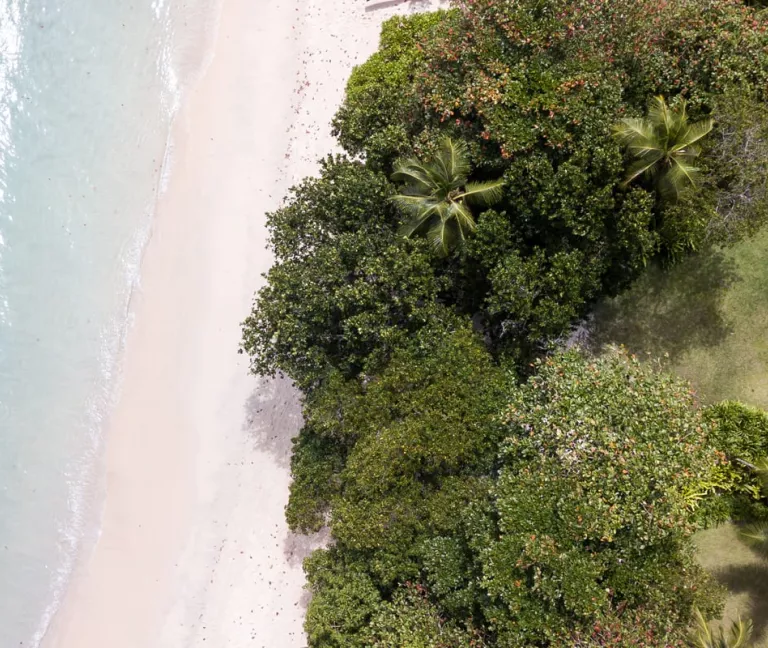
In June of this year, just before connecting with our wonderful Bonamy guests, Toby had the chance to explore a few camps we were eagerly anticipating partnering with.
During his time at the camp, he was lucky enough to embark on a nature walk, and what he discovered was nothing short of fascinating.
As a safari guide, the expectation is that you know everything there is to know about the bush – every bird, tree, blade of grass, every scent and sound. Yet, even with a number of years as a walking guide firmly under my belt, I'll be the first to admit that my knowledge is far from complete. That's why I relish the opportunity to go on walking safaris whenever I can. There's an endless world of discovery waiting, and when that world is as exciting as this, I'm always hungry to learn more.
So, here's a glimpse into what unfolded during my walk from Kafunta Three Rivers Camp in the heart of South Luangwa, Zambia. There were a few standout moments:
The Sausage Tree: Nature's Quirky Offering
One of the most memorable trees that caught my attention was the Sausage tree. You'd be hard-pressed to miss this distinctive sight on any safari, whether it's from the vantage point of a game drive or on foot. It's called the Sausage tree due to the massive sausage-shaped fruits that hang from its branches – a truly unique spectacle.
Now, these fruits aren't just for show – they're edible too. If you find one on the ground (watch out, they're hefty), it's safe to give it a taste. They're surprisingly tough, but once you crack them open, you're in for a treat with a sweet, citrusy cucumber-like flavour. Parrots, squirrels, baboons – they all relish these fruits. Even elephants and hippos have developed a liking for them.

Giraffes in front of a sausage tree
As September and October roll around, the Sausage tree transforms into a hunting haven for leopards. With its big, beautiful red flowers in full bloom, these stealthy predators use the tree as their strategic hideout, dropping onto unsuspecting antelope below. Remarkably, this hunting tactic isn't confined to just Zambia – guests of ours in Tanzania have witnessed this spectacle first hand.
But the tree's legacy extends beyond the animal kingdom; human communities have also harnessed its properties for centuries. The bark of the tree is renowned for its ability to cure skin allergies and conditions. And here's a gem of wisdom I wish I knew earlier, especially as a new father: if a "skinny baby" is born, concoct a paste by mixing pieces of the fruit with its roots. Applying this paste to the baby's body will supposedly transform them into a pleasantly plump cherub. Talk about ancient wisdom, although I'm not convinced my wife would let me get away with trying this out!
The Sausage tree also boasts versatility beyond imagination. It's a go-to choice for crafting canoes and mokoros, thanks to its relatively fast growth rate. Within 30-50 years, it reaches a substantial size, making it an ideal resource.
Rain Tree: Nature's Artistry in Survival

Rain tree leaves with fungus
Another intriguing find during our walk was the Rain tree. Its oversized leaves initially struck me as a canvas marred by a parasite. However, the truth behind this odd appearance is a testament to nature's ingenious strategies for survival. The Rain tree maintains a symbiotic relationship with a fungus, which imparts a distasteful hue to the leaves of young trees. This transformation serves as a natural deterrent, discouraging elephants from ravaging the tree, a scenario that's all too common with Mopane trees. By the time the Rain tree matures, the fungus recedes, leaving observers marveling at its clever tactics for survival.
Hippo Cough Ball: A Playful Illusion of Nature
As we neared the end of our walk, my attention was repeatedly drawn to peculiar formations strewn along the path. These curious structures, resembling oversized grassy-cigars, turned out to be Hippo Cough Balls. What makes them truly fascinating is the quirky behaviour of the resident hippos. They regurgitate grass they find unpalatable or potentially harmful, forming these unique "cough balls." It's a behaviour that not only contributes to the ecosystem's delicate balance but also adds a touch of whimsy to the safari experience.

Hippo cough ball
Over the course of those three captivating hours, spent at an unhurried pace, we encountered countless other captivating plants, tracks, and trees. The sheer depth of knowledge some guides possess is astounding, a testament to their unyielding dedication to their craft. If you ever get the chance, I wholeheartedly recommend embarking on a walking safari. It's an opportunity to immerse yourself in nature's classroom, where every step is a lesson and every encounter with the wild is an invitation to learn, appreciate, and protect.

Toby Pheasant
Toby first visited Africa at the tender age of four when he accompanied his family on their first of several safari holidays. From that moment on Toby’s love affair with Africa’s nature and wildlif...
View profileNever miss a notebook entry with our newsletter


